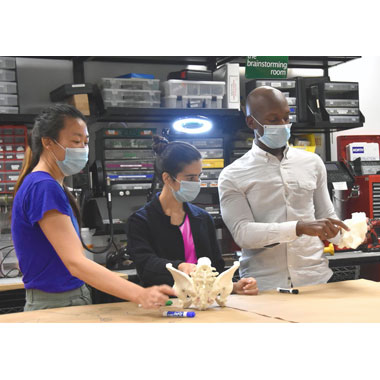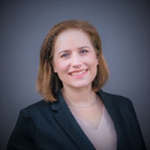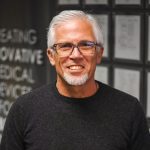Founded in 2020 by Fogarty Innovations and the Stanford Byers Center for Biodesign, Diversity by Doing (DxD) is taking concrete action to increase diversity in the medtech industry. We spoke with Ingrid Ellerbe, executive director of DxD, and Andrew Cleeland, CEO of Fogarty Innovation, to learn more about the mission of DxD, the resources it offers the industry and why diversity is a must for an industry built on innovation and health care.
MedTech Intelligence (MTI): When was DxD founded and what was the impetus to create it?
Ingrid: DxD was founded in early 2020 and it is a partnership between Fogarty Innovation and the Stanford Byers Center for Biodesign. The idea originally came out of a survey that was sent to health tech professionals looking at inequities with women in the health tech space. The responses to that survey spurred a lot of conversation. So, that was followed by a Summit, which included individuals from Fogarty and Stanford BioDesign and DxD founding members Mike Regan, Paul Yock and Maria Sainz.
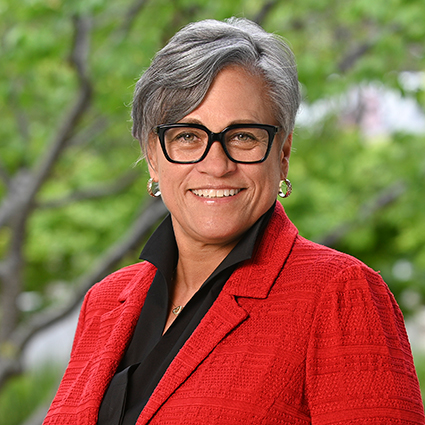
Andrew: We went into the survey thinking that we were doing pretty well in medtech in respect to gender equity, and we were frankly surprised to learn that we were not. So, we decided to partner up and produce Diversity by Doing (DxD). The mission is in the name, “by doing.” We’re not just going to talk about this, we’re going to start doing something about it.
Our focus was on the early medtech ecosystem, and when we started, we realized that this isn’t just a gender issue; this is an equality issue, and that includes gender, race and economic equality. And that’s what you subsequently see in DxD’s work as we’ve evolved.
MTI: How are you working to increase diversity in the medtech space?
Andrew: The most important step we made in this program was recruiting and hiring Ingrid to be the executive director. What DxD has become is largely on her shoulders.
We decided early on that our focus should be on the early medtech ecosystem. If we can get to these companies early, we can then help them build diversity into their DNA—diversity, equity and inclusion (DEI) all the way through.
Ingrid: We have done a lot of outreach to those smaller and midscale companies to say, “How can we help you in this phase of your operations?” Because we know that these companies have a lot on their plates. They are raising money. They are finding their teams, and they do have a vested interest in diversity. But they don’t necessarily have the bandwidth or the expertise to do that kind of work. That is where we come in to provide support and help guide them in terms of what they want to see in their own facilities.
When you weave DEI into the fabric of who you are at the very onset of starting your business, it becomes second nature. It is not like a factory car where they do an add-on or an accessory. It has to be there from the very beginning.
MTI: When you talk about the early ecosystem, what do you consider the early ecosystem? Is it the educational system or connecting with startups, and how do you reach these organizations?
Ingrid: It’s two parts. It’s connecting with the company’s early on—and we are talking about early and mid-stage companies—because when you get to a certain point it’s very hard to go back and change your company culture. Also, we know that these are the companies that the bigger companies are acquiring. If they purchase or invest in a company that already has this built in to their culture, the larger company takes that in as part of the acquisition.
The other part of it is having more of a pipeline into health tech. I previously worked for a nonprofit focused on STEM. At that point everybody was very focused on aerospace—it was the sexy new thing. When Andrew and his team came to me and I saw what was going on in health tech, I thought, before we go to the moon how about we fix stuff right here on Earth?
A lot of young students—racially and economically diverse students and women—are not as aware of medtech as an industry. So, we are working also to put that front and center. We want to get to them early enough to say, “You really need to consider medtech. It’s a career that is not only life changing for you personally, it’s life changing to your family and it’s life-changing for your community.”
Andrew: Another really important component is that a diverse workforce makes better decisions. Everyone understands that conceptually, but most small companies lack the capability to make this a priority, as Ingrid mentioned. That’s what DxD can provide. In the large companies you have big HR departments. Small companies rarely have HR departments. We are offering that service. We can provide the framework.
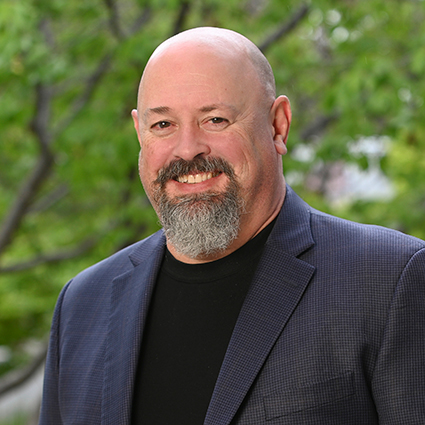
Then, there’s the educational component, actually opening a pool of talent. What we’re trying to do is go out to the schools and the students to increase their awareness of how cool this industry can be. We’ve been doing that for years in certain areas; now we are being much more mindful and deliberate by saying, let’s not just go the traditional path, let’s reach out to a much more diverse audience. That is what we’re trying to do with programs like the Summer Innovation and Exploration Series that we held in June.
MTI: Could you tell us a little bit about the summer program? Who are your target attendees?
Ingrid: We held the first one in 2021, and it was a virtual event due to COVID. This year was an in-person event with 44 attendees. The organizations that we work with in DxD sent their interns to this program, so it was very targeted to the interns at those small- to mid-scale companies.
One thing we wanted to make sure we looked at this year is the entire medtech ecosystem. Most of the interns are focused in on the one thing or one area they work on, but I think understanding the whole landscape is important. We looked at, what is it like to work at a small company? We talked about entrepreneurship, startups and acquisitions. We did some speed mentoring and offered a condensed version of the Stanford Biodesign process.
One of the things that I really believe in is the multiplier effect. When you have 44 attendees and you multiply that out by their colleagues, their families and the people they touch, it causes a ripple. These are incredibly intelligent young folks and they are very serious about learning everything they can learn. I think they walked away with a lot of knowledge, but they also walked away with the sense of community and a sense of how approachable everybody in the medtech space is.
Andrew: What we fundamentally wanted to do was show these young folks what it’s like to work in medtech. So, there were specific topics but our speakers also shared their personal journeys in the industry. I started off the program by telling my story of how I got into medtech and what it has meant to me, with the point of just saying that this is a remarkable thing to be doing. One of the best things you can do in your career is to serve others, and we get to do that in a way where we can affect millions of lives.
We want to gain mindshare with these students: “You can go into tech, but we’d love for you to come in to medtech and we want to provide you with that opportunity.”
MTI: You mentioned that people conceptually understand the need for more diversity, but there are some who question its value. What would you tell people in terms of why diversity is important in general and in particular in an industry like the medtech industry?
Ingrid: I always start out with No.1, it is the right thing to do. Beyond that, when you have an industry that is too homogenous, you are not bringing in lived experiences and you are not bringing in diverse thoughts and perspectives. You have to be reflective of the population of patients that you work with and serve.
We all believe that we have to improve health outcomes, particularly for women and people of color. In order to do that, you need people that reflect that population within your organization, and you cannot have groupthink.
It is challenging because the propensity is to say, I’m going to call the guy I know or I’m going to hire my friend’s child who is graduating this year. You have to work to get outside of that bubble. One of the things that companies find out is once you start this process, the person you bring in—that woman or person of color you bring in—that person becomes your flywheel. Now when you say, who do you know? Your network is broadened extensively.
Andrew: I also will start with No.1, it’s the right thing to do. No. 2, it makes business sense. It just simply does. Let’s start with a simple one: myocardial infarction (MI). Acute MI manifests differently in women than men. I go back to one of the first companies I was working with, which was focused on cardiovascular disease. We did not differentiate between men and women. We developed a therapy to reduce the impact of an MI. It may have been more likely to work in males than females, but we just didn’t think about that.
As the industry matures and as our understanding of disease matures, we appreciate that illness affects different people differently. So, having a more diverse population internally, particularly in your senior staff, is going to make you think differently.
We appreciate that there are folks for whom this is going to be difficult. One of the things we’re trying to do is rather than tell people what they should do, find ways in which we can reduce the friction for them and make it easier for these small companies
MTI: Do you offer recruiting services, or is it more helping people understand how to recruit better?
Ingrid: It is twofold. On the topic of how to recruit better, one of our online seminars is dedicated to human resources, human capital and recruiting. But, we are contacted by companies asking how to find more diverse interns. We do help them with that, and this is something we plan to do much more intentionally next year.
A key piece of what we focus on is belonging, because the retention piece for these companies is incredibly important. How many women did you hire? How many people of color did you hire? How many of them did you keep? How many are accelerating in their careers? How many are moving up to the C-suite?
MTI: What are some of the key points when it comes to creating that sense of belonging for new employees?
Ingrid: Cultural awareness is a big piece of it. If you are intentional about bringing in people from different cultures, it is incumbent upon you to understand a little bit about those cultures. If people come in and they feel secluded or excluded, they will leave.
We talk about the vernacular. For example, when you say someone isn’t a good fit, what does that mean? Are they not a good fit for your organization or do you not have a level of comfort with them? When you say that person is different, what is the norm? If they’re different does that make you the model of normal and they are something else? We get into the nuances of language and talk about activities you can do in your company to make people feel as if they belong. And a lot of that involves having good, courageous conversations. Like walking up to someone who is of a different faith and saying, “I don’t know a lot about your faith and I want to learn.”
When this becomes part of your day to day, it’s not hard. It’s just part and parcel of who you are. If you start there, there is a level and degree of compassion that can exist within your organization from the beginning.
Andrew: One of the things that we try to teach our companies at Fogarty is that culture is going to form within every organization. It can be organic and evolve on its own, or you can structure it. Just being a little bit more informed and a little bit more educated on some of the points that Ingrid just brought up will help you shape your culture. And if you have a good strong company culture of belonging, that is where you’re going to start to retain employees, and that is key.
It’s not looking backward and saying, “What we did in the past was wrong,” it’s looking forward to say, “We can keep improving. We can do better, and it is in the best interest of the business to do so.”

